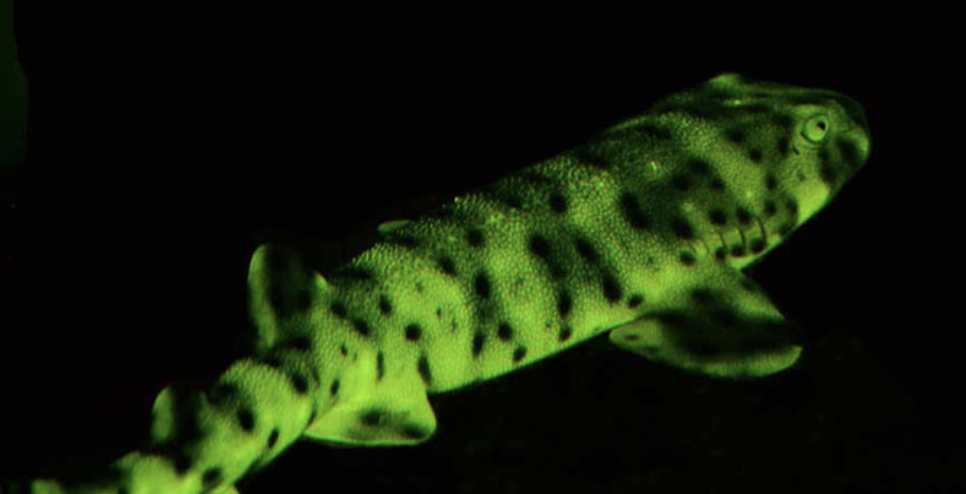Biofluorescence is an incredible phenomenon that many ocean organism experience, the term is often exchanged for “glowing in the dark”. To start, let’s talk about the difference between biofluorescence and bioluminescence. Organisms that are biofluorescent are able to absorb light at one wavelength, and then reflect that light at a different wavelength, creating visible light in complete darkness. This is possible due to proteins in their skin called GFP’s (Green Fluorescent Proteins). Ocean organisms typically emit this light in greens, but can also do the same with reds, and oranges. However when an organism is bioluminescent, it is creating and emitting its own light. This is most often seen in different species of deep dwelling jellyfish. These colors are most often visible in green and blue hues. In other words biofluorescent organisms need a light source in order to emit light while bioluminescent ones do not.
Chaincat sharks (Scyliorhinus retifer) can live up to depths of one thousand feet into the Mesopelagic zone where there is little visible light. These sharks will grow to approximately 2 feet in length and live for around 12 years. They are able to reflect light directly from the sun, or light that gets reflected off the moon at night. Their skin is covered in dermal denticles, with intricate stripes that guide and scatter the glow into species-specific patterns. It is difficult to recreate this adaptation because these sharks will only glow if there is absolutely no ambient light present, while also shining UV light onto them. They also adapted catlike eyes to allow them to see this green light and essentially nothing else, hence how they got the “cat”-shark. It is difficult to distinguish the exact reason for this phenomenon but it likely helps them recognize each other, communicate, and possibly attract mates—while staying invisible to most other fish and predators.
Image Credits: https://www.forbes.com/sites/melissacristinamarquez/2019/08/26/scientists-have-figured-out-why-some-sharks-glow-in-the-dark/ (J. SPARKS, D. GRUBER, AND V. PIERIBONE)
